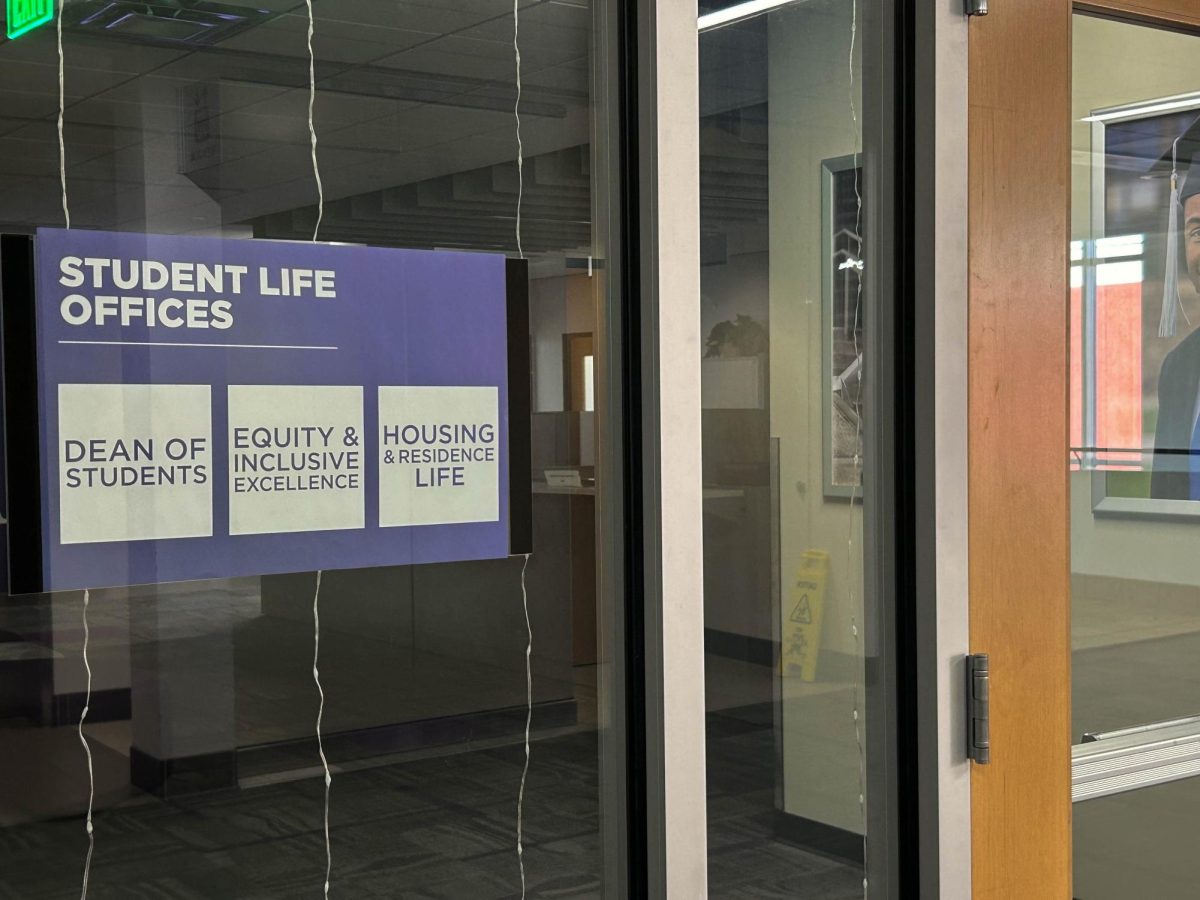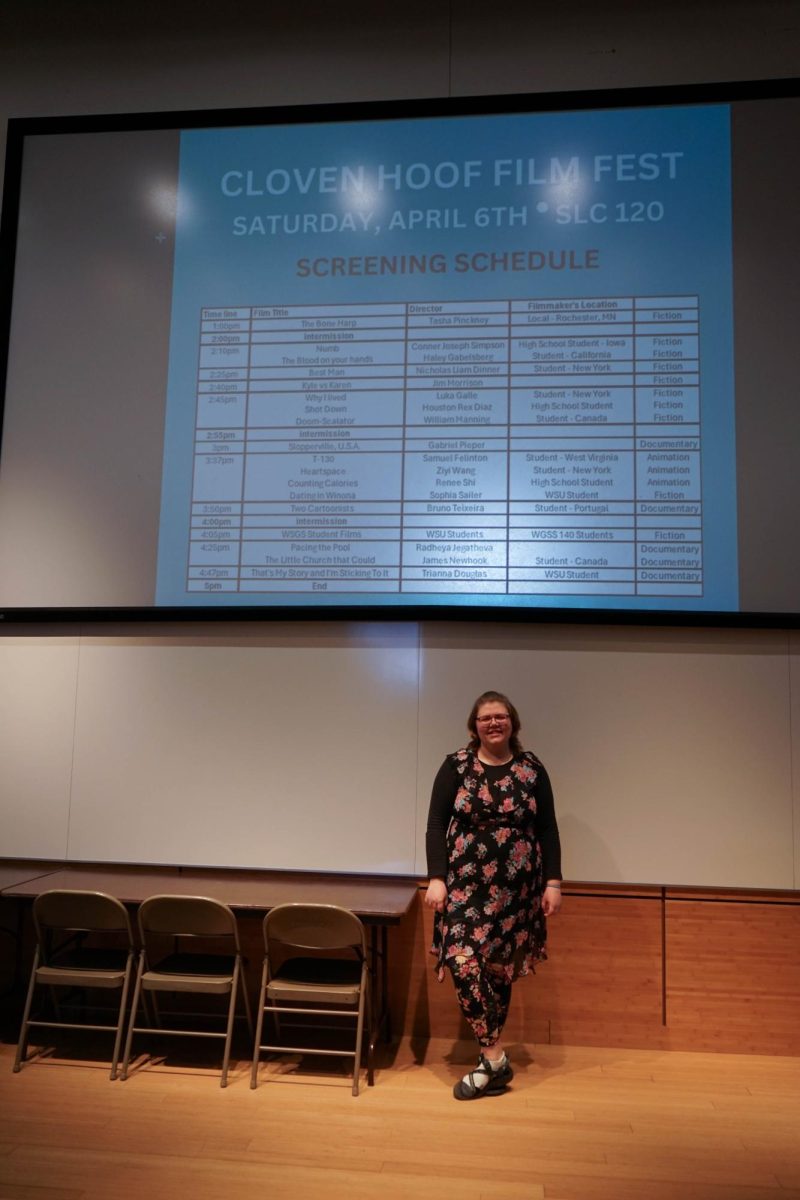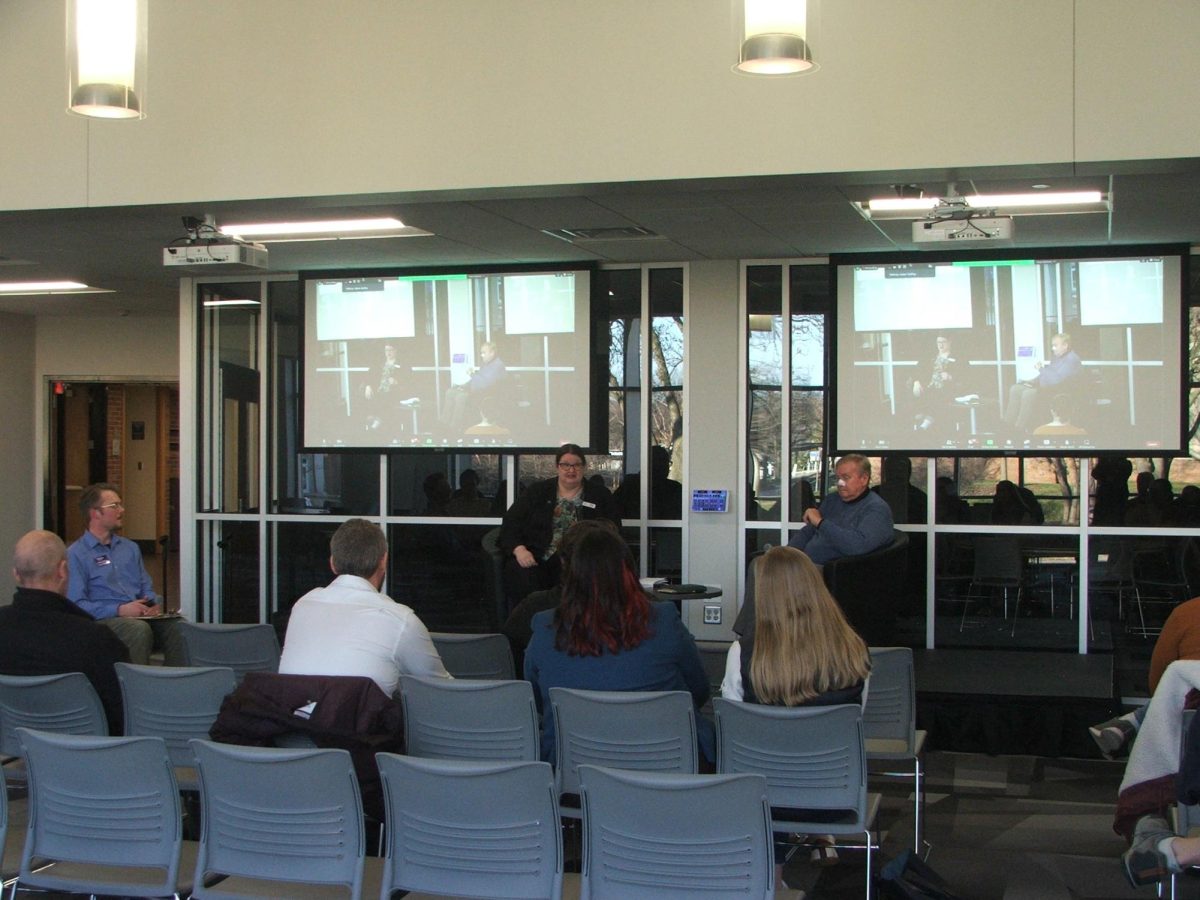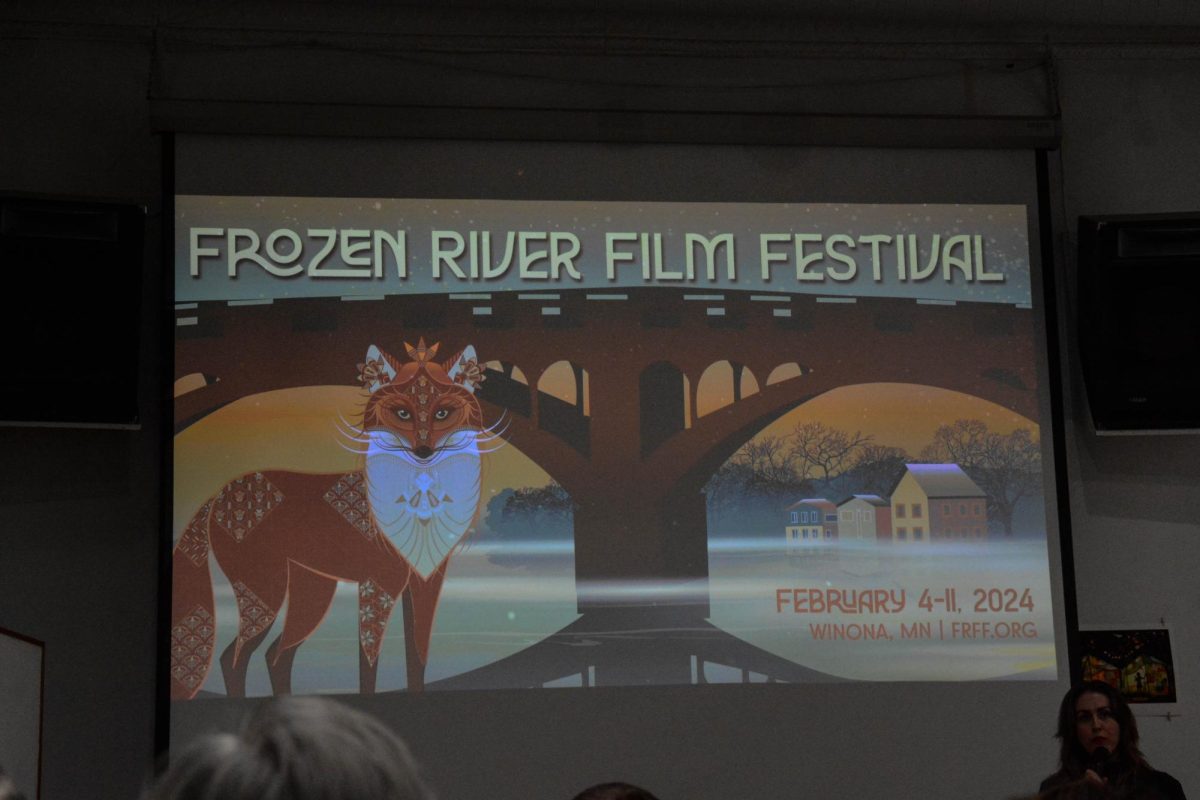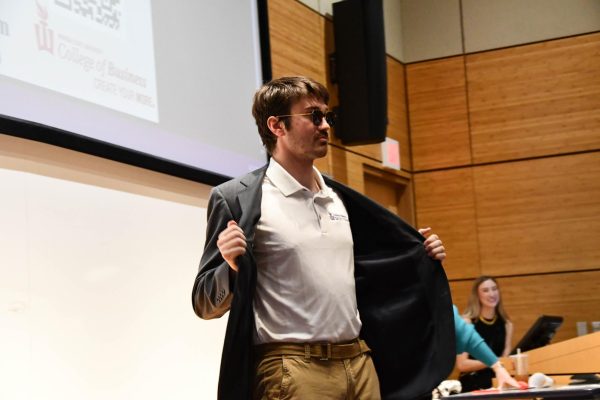Winona State celebrates Earth Week
April 25, 2018
Thursday, April 19, photographer Mark Hirsch came to Winona State University to sign books and give a talk on his photojournalism career in celebration of Earth Week and Winona State’s Arbor Day festivities.
Hirsch’s presentation was one of many events for Earth Week and Arbor Day, and he encouraged all students to explore their campus and notice the beauty around them – especially the trees.
Hirsch was an editorial and corporate photographer who got started in Dubuque, Iowa. However, after spending 19 years in the newspaper industry, he was let go from his job. In 2011, Hirsch was in a car accident that almost left him dead. In the months that followed, while he was recovering, he bought his first iPhone and discovered the camera capabilities that were professional and unique, which allowed for easy, high-quality pictures without having to invest in a camera.
One day while driving past a tree near his house near Platteville, Wisconsin, Hirsch really noticed the tree for the first time. In the middle of one of his friend’s farm fields, this lone 200-year-old burr oak tree had been there his entire time living there, and he never noticed its beauty before then. Hirsch pulled over to the side of the road, snapped a picture with his iPhone, and drove home. After seeing the true professional quality of the photo, he went back day after day to take more pictures of the tree. Hirsch then spent a year with “That Tree,” developing not only a series of images, but a social media phenomenon and a book project.
Hirsch touched on many topics in his presentation, including everything that set him back and how he overcame several challenges. When he first went to college, he had no idea what to study until he started taking pictures and someone told him he had a knack for it. When he lost his job, he still had to find a way to support him and his family, and when he was hit by falling concrete while driving, it took him months to recover.
However, it is Hirsch’s outlook that makes him resilient.
“Don’t be defined by adversity. Be defined by how you deal with it,” Hirsch said. “You don’t have to wait for a tragedy to make you appreciate the simple things in your life—like a tree.”
Hirsch brought several other pieces of advice, including how photographers should view themselves. Since he is a photographer for newspapers, he talked about feeling at the bottom of the hierarchy and not really appreciated for what he brought, and he cautions other photographers to fight the feeling. He also wants photographers to see themselves as the artists they are.
“It’s crucial to understand you make pictures, you don’t take them,” Hirsch said. “For a photographer, light is everything. It’s the paint for our paintings and the charcoal for our drawings. We are artists.”
In addition to presenting, Hirsch visited several classes at Winona State, including art and poetry classes, to talk about his experiences and what he has learned.
Claire Bowman, a senior literature and language major, was in the poetry class Hirsch visited.
“He then showed us a beautiful slideshow of some of the images in his book and discussed a bit about how he’d spend time with that tree every day,” Bowman said. “Hirsch also talked about how he challenged himself to use a square frame for the photos instead of his typical longer vertical or horizontal frames.”
Early in the semester, Bowman’s poetry class wrote poems about trees.
“He was really cool to listen to,” Bowman said. “We also gave him a chapbook of all of our tree poems.”
Hirsch also recommended trying to see the world through different people’s eyes. When deciding what to do for the last day of his year-long project, he reached out to his daughter, who told him he should create a Facebook event where anyone who could was welcome to show up for his last photo session. When confronted with the possibility of people not being able to come, a man sent his hat, which he had taken with him on two tours in Iraq and seven continents, and asked Hirsch if he could take a picture of it on the tree. Hirsch said yes and invited all other people who couldn’t be there to send him items of significance to take pictures with.
He also had the opportunity to see his tree through the eyes of children. A woman wanted her children to see the tree, so he offered to take them there and take pictures of the children exploring. Though it took them 45 minutes to walk the 350 feet from the road to the tree, the experience made Hirsch see the world through completely new eyes.
His last piece of advice to students was to see the brightness and positivity in what they do every single day. When he started posting pictures of “That Tree” on social media, he had no idea the kind of response he would get.
“There was a woman who messaged me on Facebook and told me that she suffered from depression, but that my daily picture of ‘That Tree’ was a bright spot in her day,” Hirsch said. “I messaged back and told her a lesson I heard from my family—that every day is a good day. And she is one of many messages I got telling me how my work impacted people.”

